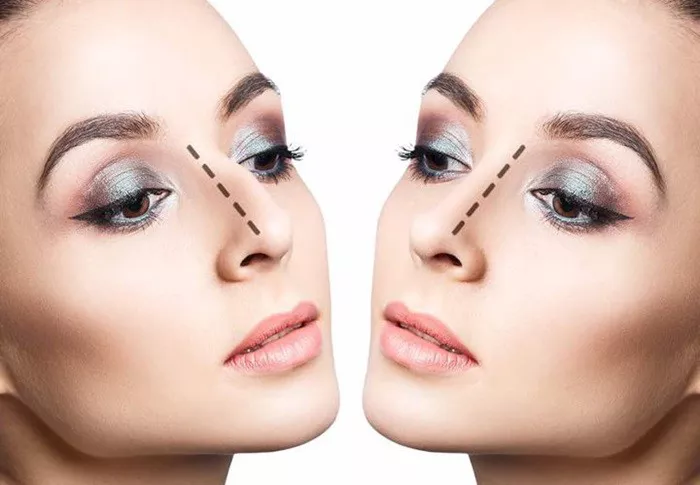Rhinoplasty, commonly known as a nose job, is a surgical procedure aimed at reshaping the nose to improve its function and appearance. One specific type of rhinoplasty that has gained popularity is Gore-tex rhinoplasty. This technique utilizes Gore-tex, a biocompatible material, to achieve desired nasal changes. This article delves into the details of Gore-tex rhinoplasty, its advantages, procedure, and what patients can expect.
Understanding Gore-tex Material
What is Gore-tex?
Gore-tex is a synthetic material known for its porous structure and high biocompatibility. Originally developed for use in medical applications such as vascular grafts, it has found a place in cosmetic surgery, particularly in rhinoplasty. The material is made from expanded polytetrafluoroethylene (ePTFE), which allows tissue integration and reduces the risk of rejection.
Why Use Gore-tex in Rhinoplasty?
The use of Gore-tex in rhinoplasty offers several advantages. Its porous nature allows for tissue ingrowth, providing stability and a natural feel. Moreover, it is less likely to cause allergic reactions compared to some other synthetic materials. Gore-tex can also be precisely shaped and contoured, making it an excellent choice for achieving specific aesthetic goals.
The Procedure of Gore-tex Rhinoplasty
Preoperative Consultation
Before undergoing Gore-tex rhinoplasty, a thorough consultation with a qualified plastic surgeon is essential. During this consultation, the surgeon will assess the patient’s nasal structure, discuss their aesthetic goals, and evaluate their overall health. Detailed discussions regarding the use of Gore-tex and its benefits will also take place.
Surgical Technique
Anesthesia: The procedure typically begins with the administration of anesthesia. Depending on the complexity of the surgery and patient preference, this can be local anesthesia with sedation or general anesthesia.
Incisions: The surgeon makes precise incisions, either inside the nostrils (closed rhinoplasty) or across the columella (open rhinoplasty). The choice of technique depends on the extent of reshaping required.
Insertion of Gore-tex: Once the nasal structure is exposed, the surgeon inserts the Gore-tex material. This can involve placing small sheets or strips of Gore-tex to augment or reshape the nasal bridge, tip, or other areas as needed. The material is carefully sculpted to blend seamlessly with the natural nasal framework.
Suturing and Final Adjustments: After positioning the Gore-tex, the surgeon makes any necessary adjustments to ensure symmetry and harmony with the patient’s facial features. The incisions are then closed with sutures.
See Also: 6 Best Times to Get Rhinoplasty
Benefits of Gore-tex Rhinoplasty
Natural Aesthetic Results
One of the primary benefits of Gore-tex rhinoplasty is the natural appearance it can achieve. The material’s flexibility allows for precise contouring, which is essential for creating a nose that complements the patient’s facial structure.
Longevity and Stability
Gore-tex is known for its durability. Once integrated into the nasal tissue, it provides long-lasting results. Patients can enjoy the benefits of their rhinoplasty for many years without significant changes.
Reduced Risk of Complications
Compared to other synthetic materials, Gore-tex has a lower risk of complications such as infection or rejection. Its biocompatibility ensures that it integrates well with the body’s tissues, reducing the likelihood of adverse reactions.
Considerations and Potential Risks
Surgical Expertise
Choosing an experienced and qualified surgeon is crucial for a successful Gore-tex rhinoplasty. The surgeon’s skill in handling the material and executing the procedure plays a significant role in the outcome.
Possible Complications
While Gore-tex rhinoplasty is generally safe, potential complications can include infection, migration of the implant, or the need for revision surgery. It’s important for patients to be aware of these risks and discuss them with their surgeon.
Recovery Time
The recovery period for Gore-tex rhinoplasty is similar to other types of rhinoplasty. Patients can expect some swelling and bruising, which typically subsides within a few weeks. Full recovery and final results may take several months.
Postoperative Care
Immediate Aftercare
After the surgery, patients should follow their surgeon’s postoperative care instructions meticulously. This includes keeping the head elevated, applying cold compresses to reduce swelling, and taking prescribed medications to manage pain and prevent infection.
Follow-up Appointments
Regular follow-up appointments with the surgeon are essential to monitor the healing process and ensure that the Gore-tex material is integrating well with the nasal tissue. The surgeon will also check for any signs of complications and address them promptly.
Long-term Maintenance
While Gore-tex rhinoplasty offers long-lasting results, patients should maintain realistic expectations and understand that the nose may continue to change subtly over time due to aging and other factors. Maintaining a healthy lifestyle and avoiding trauma to the nose can help preserve the results.
Comparing Gore-tex Rhinoplasty with Other Techniques
Silicone Implants
Silicone implants are another option for nasal augmentation. However, they tend to have a higher risk of complications such as infection or extrusion compared to Gore-tex. Silicone also lacks the porous nature of Gore-tex, which means it doesn’t integrate with the tissue as effectively.
Autologous Cartilage
Using the patient’s own cartilage, often harvested from the septum, ear, or rib, is considered the gold standard in rhinoplasty for its natural compatibility and lower risk of rejection. However, Gore-tex can be an excellent alternative when sufficient cartilage is unavailable or when additional augmentation is needed.
Candidate Suitability for Gore-tex Rhinoplasty
Ideal Candidates
Ideal candidates for Gore-tex rhinoplasty are individuals seeking nasal augmentation or reshaping who do not have sufficient autologous cartilage available. They should be in good overall health, have realistic expectations, and understand the potential risks and benefits of the procedure.
Contraindications
Certain medical conditions or previous nasal surgeries may contraindicate the use of Gore-tex. It’s important for the surgeon to conduct a thorough evaluation and medical history review to determine the best approach for each patient.
Conclusion
Gore-tex rhinoplasty offers a reliable and effective solution for patients seeking nasal augmentation or reshaping. Its biocompatibility, natural-looking results, and durability make it a popular choice in cosmetic surgery. As with any surgical procedure, success largely depends on the expertise of the surgeon and careful patient selection. By understanding the benefits, risks, and postoperative care involved, patients can make informed decisions and achieve their desired aesthetic outcomes.
Related topics:


